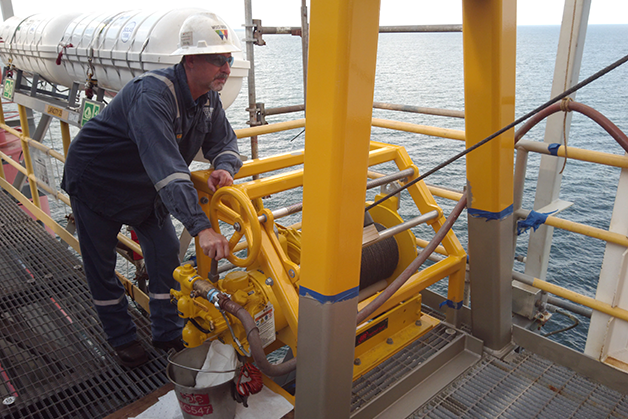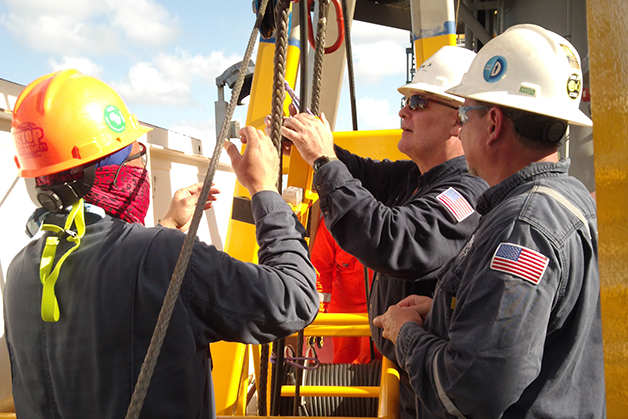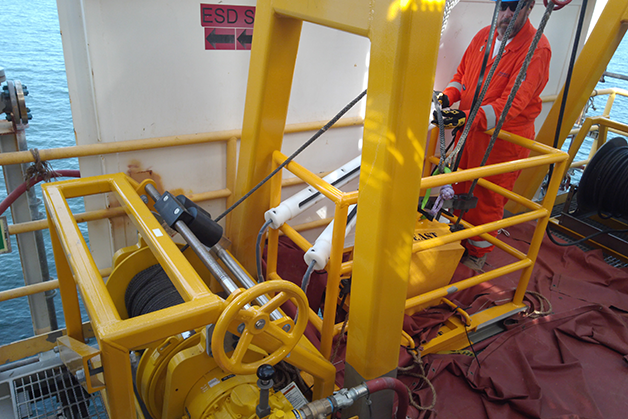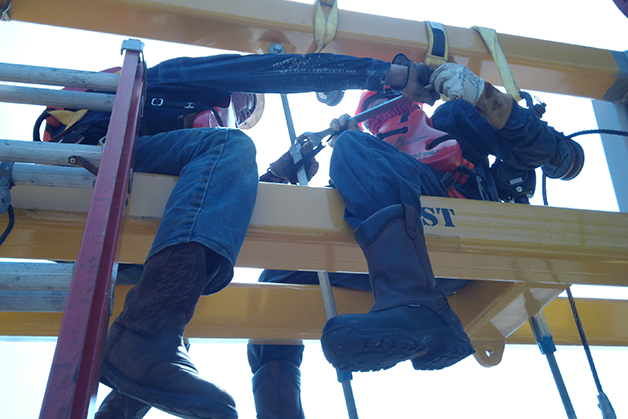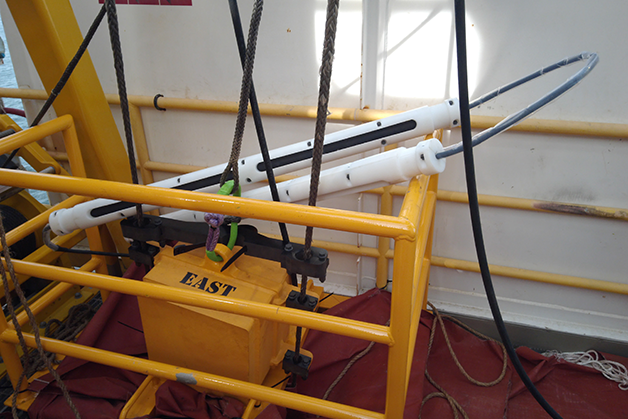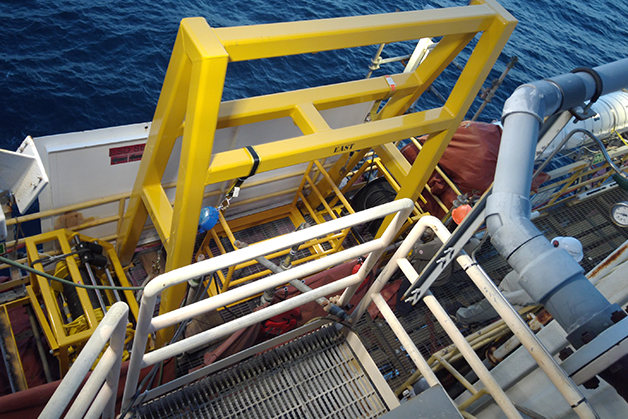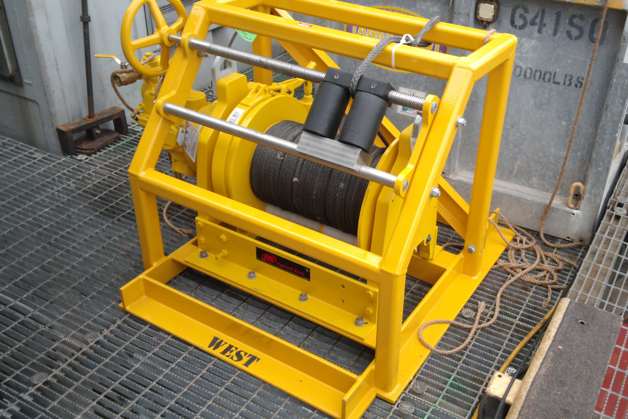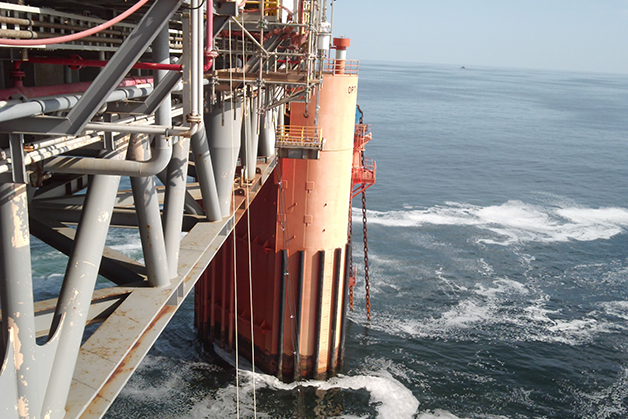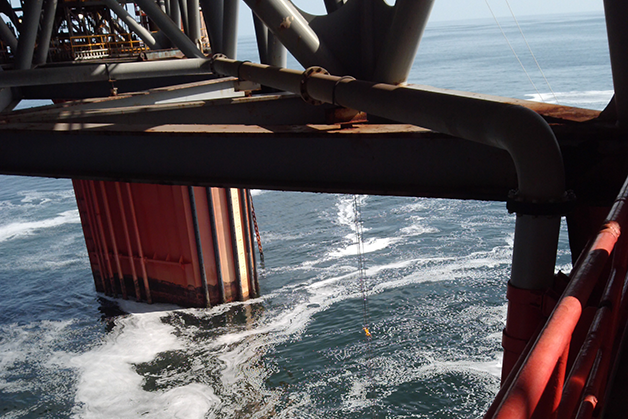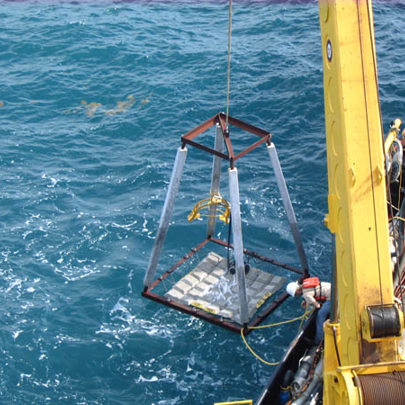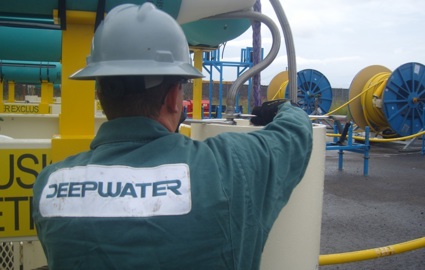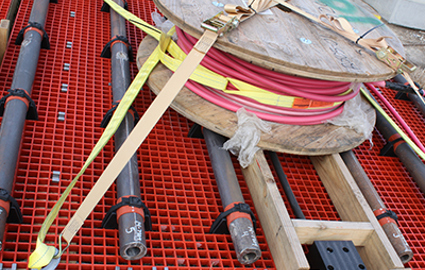Who Dat short-term CP retrofit
Suspended anode installed on semi-submersible rig
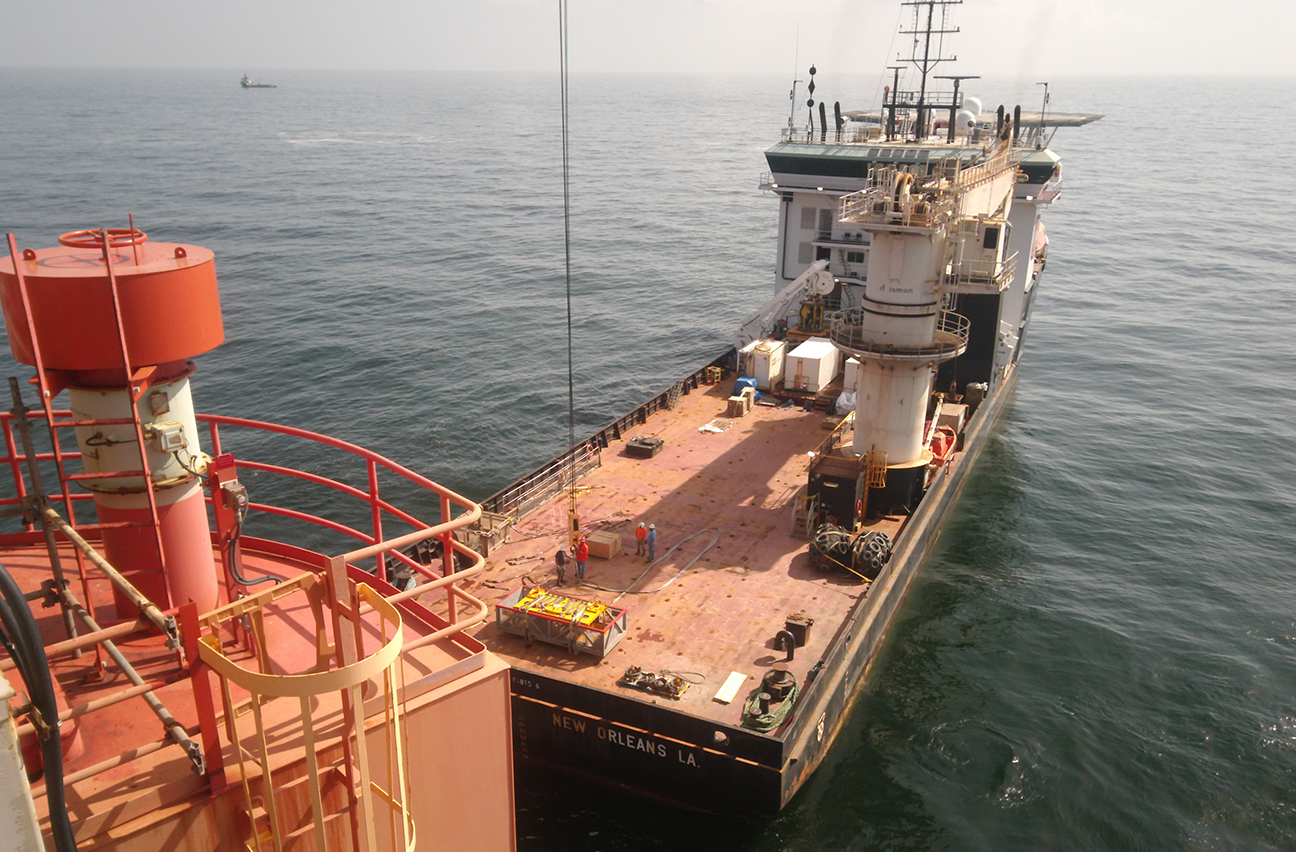
The project
Deepwater was asked to design a retrofit cathodic protection (CP) system for its Who Dat semi-submersible rig after annual surveys determined that the existing CP system was not operating to its full capacity and was at risk of failing altogether.
The platform
Who Dat’s Opti-Ex floating production system, placed in service in 2011, is held onto the seafloor by 12 mooring lines connected to 80 ft suction pile anchors. Its hull is equipped with a deep draft ring-pontoon. It’s designed to withstand a 1,000-year storm. Production capacity is 60,000 barrels of oil per day, and its flexible design can be modified for use at other fields. The FPS is tethered in the Who Dat oil and gas field in the Mississippi Canyon of the Gulf of Mexico, in water depths of 945m (3,100 ft).
The semi-submersible structure was originally protected by a marine-grade coating system in combination with an ICCP system consisting of 20 close-mounted ICCP anodes. Eight were located on the exterior of the columns, eight were located on the exterior of the pontoons and four were located on top of the pontoons. The anodes were powered by four individual rectifier units, and the cathodic protection potentials were monitored by four zinc reference electrodes mounted on the outside of the pontoon.
The problem
The SW, NE and SE sides had no functional ICCP anodes. One functional anode on the NW side was likely to fail within the next 12 months. A cathodic protection (CP) retrofit was required to prevent corrosion on the hull and risers.
The solution
It was determined that a short-term impressed current cathodic protection (ICCP) system could be deployed to maintain cathodic protection to the semi-submersible rig. A sacrificial anode cathodic protection system was not pursued as a short-term solution because of the lengthy and labor-intensive installation process. The short-term solution that was chosen uses the existing transformer rectifiers (TRs) and two new mixed-metal oxide (MMO) anodes per side on the east and west side of the rig, which are supported by a tensioned tether guide system for deployment. The guide tethers are suspended from two new hang-off frames mounted on either side of the upper deck of Who Dat. Top-side work took a little over a week to complete, while the subsea phase took another four days. The anode cables are vulnerable to mechanical damage and may be replaced on a 12 to 36-month schedule, which is typical for this kind of low-cost system.
